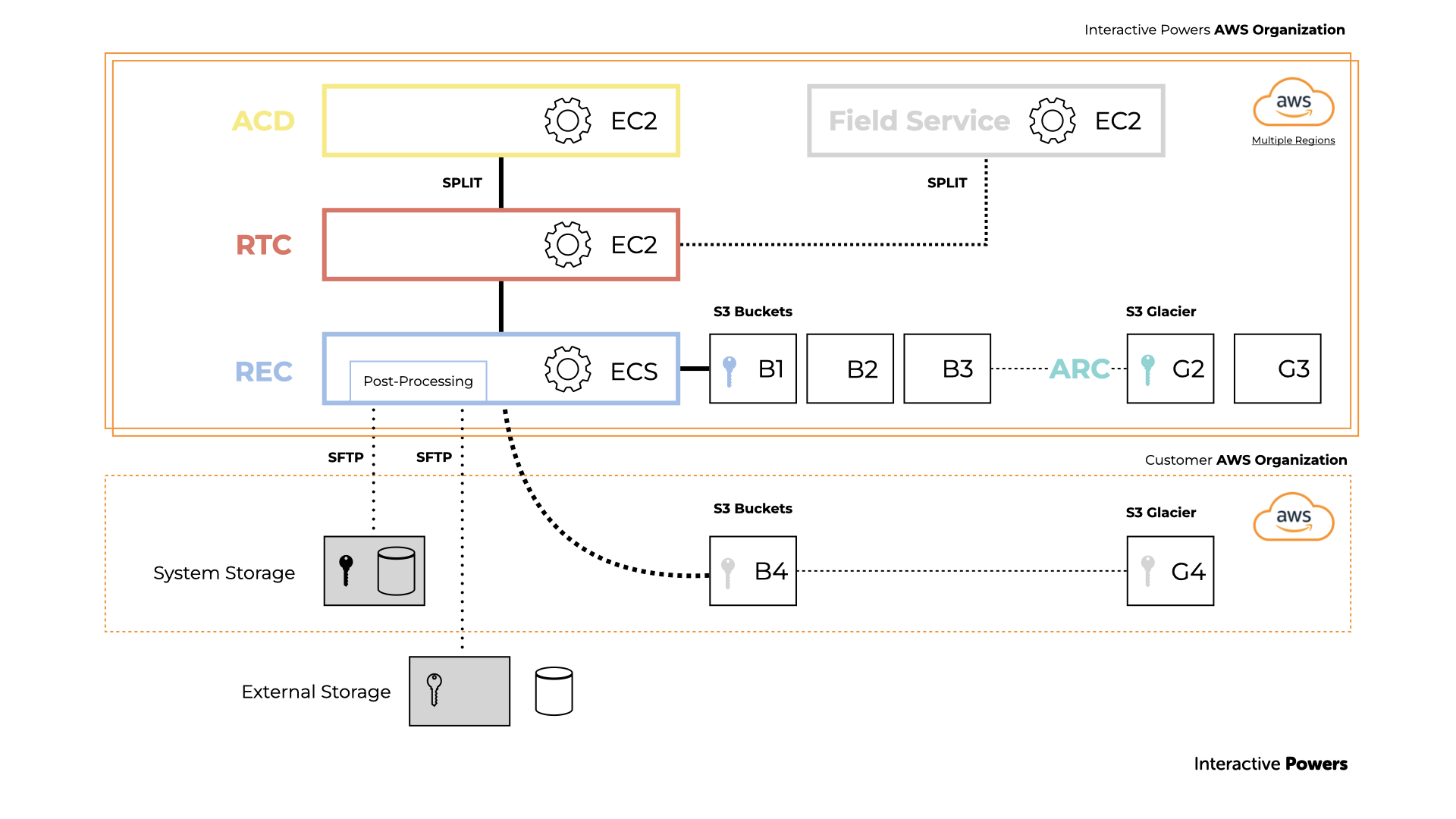Video REC: Post-Processing
Source: Interactive Powers. Creative Commons
Post-Processing Module: Automation, Transfer and Exportation Services
The Post-Processing module is an advanced component of Video REC services that provides a comprehensive toolkit for handling video recordings. This powerful module streamlines the management, storage, and manipulation of recorded content, helping users maximize the potential of their video assets.
Key features of the Post-Processing module include:
1- Automatic Exportation
A key feature of the Post-Processing module is its seamless transfer of recordings to external repositories. This flexibility enables users to send video recordings to various locations and storage platforms, ensuring optimal organization, accessibility, and compliance with storage management requirements.
2- Redundant Backup Copies
The module facilitates the creation of redundant backup copies, enhancing security for your video recordings. This feature safeguards crucial content and minimizes the risk of data loss or corruption. Users can rest assured that their recordings are protected and retrievable from an alternate data center site.
3- Scheduled Deletion
The Post-Processing module offers sophisticated scheduled deletion for recordings. It efficiently manages storage by removing recordings based on customizable parameters, such as date ranges, enabling time-based deletion criteria. The module also supports rule-based deletion for complex strategies and can respond to storage volume thresholds, optimizing resource utilization and preventing overflow issues.
4- Recordings Transfer
The Post-Processing module supports a wide range of transfer protocols, including SFTP for encrypted transfers, FTP for standard transfers, S3 for cloud storage, and various other synchronization protocols. This versatility allows users to integrate the module with their existing infrastructure and preferred transfer methods, regardless of specific technical requirements.
5- Two-Level Storage
The module offers customizable archiving capabilities. Users can define specific criteria for archiving based on factors like file size, date ranges, or content type. This enables efficient long-term storage management, helping users optimize resources by automatically organizing and categorizing video content based on predefined rules. It streamlines the archiving process, making it easier to manage large volumes of recordings over time.
6- Early Notification System
An advanced notification system keeps administrators informed about critical storage and archiving operations. It sends detailed alerts about storage capacity and archiving processes, enabling proactive issue management. By providing real-time updates on storage utilization, capacity limits, and archiving anomalies, the system ensures optimal performance and data integrity. This feature is crucial in high-volume environments where efficient storage management is essential for continuous operations.
7- Metadata Management
The Post-Processing module provides robust metadata management tools. Users can easily add, edit, and organize metadata for their video recordings, creating a rich information ecosystem around their content. This enhances searchability and improves content categorization and retrieval, significantly boosting the discoverability and usability of video assets. Users can effortlessly tag, describe, and classify recordings, making it simple to locate specific content within large video libraries and enabling more efficient content management workflows.
Video REC leverages Amazon Web Services’ (AWS) robust and secure infrastructure. It uses Amazon Elastic Container Service (ECS) for efficient, scalable video processing, dynamically allocating computing resources to ensure optimal performance, even during peak usage. For storage, Video REC combines Amazon S3 Buckets and Glacier. S3 Buckets provide fast, reliable storage for frequently accessed data, while Glacier offers cost-effective long-term archival for less-used content. This two-tiered storage approach enables immediate access to recent recordings and economical preservation of older content, optimizing both performance and cost-effectiveness in Video REC’s cloud operations.

In Summary, main features are:
- Archiving based on specific date ranges, volumes, or custom rules
- Controlled data migration operations
- Moving selected recordings to external storage
- Creating backup copies of entire or selected recordings
- Executing massive recording export procedures
- Implementing automatic recording deletion procedures
- Enabling smart transfer of recording files
- Converting recordings to different audio/video formats
- Processing audio-video mixing
The Post-Processing module uses a customized Python script for each service, offering full transparency and flexibility to our customers. This choice of programming language enables easy customization and integration, allowing clients to adapt the rules to their unique requirements. Python’s readability and rich library ecosystem make it ideal for developing robust, scalable solutions that can grow with evolving needs. Furthermore, this transparency builds trust and encourages collaboration between our team and customers, as they can easily review, understand, and potentially contribute to the codebase if desired.
Interactive Powers - Streamline your business communications
